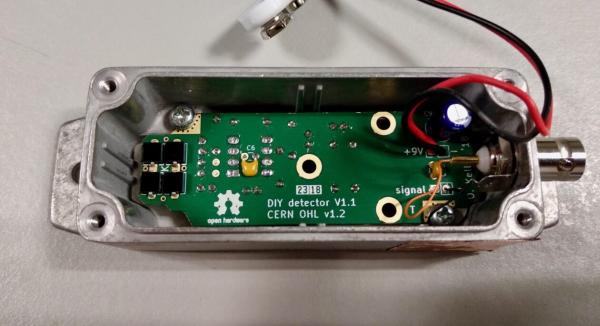Silicon detectors are widely used in particle and nuclear physics for measuring ionizing radiation. This Do-It-Yourself project allows making a low-cost particle detector from scratch using silicon photodiodes.

It can distinguish different particle types (alpha particles and electrons) and measures their energy between 33 keV and 8 MeV. The detector must be shielded from light and is, therefore, best mounted inside your favorite candy tin box. The signal output can be directly connected with microphone or headset inputs of regular laptops and smartphones.
The DIY particle detector is open source science hardware, released under the CERN open hardware license. Construction details and software for undertaking measurements can be found on the corresponding project website. The circuit board and electronic parts (~20 EUR) can be easily procured via kitspace, an open hardware design repository.
Measurement of an old ceramic pendant
For the measurement shown below, an old ceramic pendant from the Majolika ceramics manufacture in Karlsruhe, Germany, was put right below the silicon detector. The energy spectrum shows a lot of electrons from beta decays as well as two characteristic alpha energy lines in the 3 to 4 MeV range.
By comparing this measurement with the energy spectrum from a small uranium stone (c.f. article, figure 9), it can be concluded that several higher energy alpha lines are missing. In particular, the two peaks of polonium isotopes on the very right are not present. This can be explained by the fact, that uranium-based ceramic paint, so-called uranium glaze, was typically produced from chemically purified uranium.
Read more: DIY SILICON PHOTODIODE PARTICLE DETECTOR DIRECTLY FROM CERN
